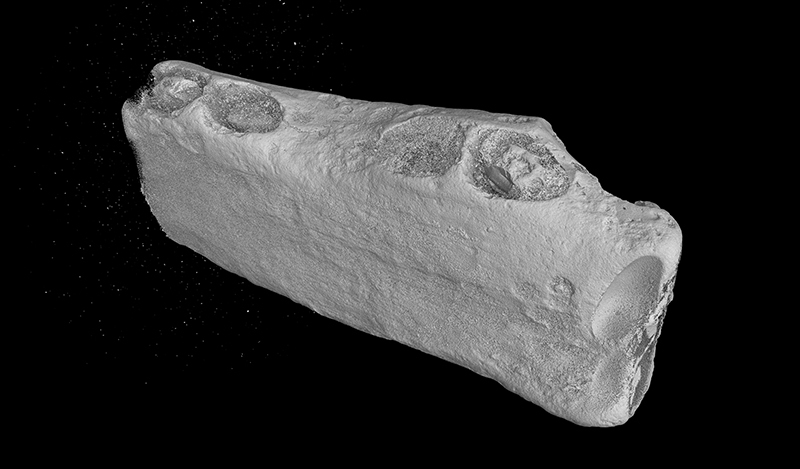Fossils found in Lightning Ridge point to epicentre of monotremes
Lily Plass
27 May 2024, 7:40 AM
 Age of Monotremes Illustration by Peter Shouten
Age of Monotremes Illustration by Peter Shouten A fascinating fossil found in Lightning Ridge by paleontologist Elizabeth Smith and her daughter Clytie Smith from the Australian Opal Centre looks to mark the area as the epicentre for monotremes.
Monotremes are egg-laying mammals and are found only in Australia.
The Smith's find has been identified as a new species of monotreme.
The only monotremes currently alive today are the platypus and the echidna, therefore Chief Scientist and Director of the Australian Museum Research Institute Kris Helgen gave the fossils the informal name ‘echidnapus’.
“Its overall anatomy is probably quite like the platypus, but with features of the jaw and snout a bit more like an echidna – you might call it an ‘echidnapus’,” Professor Helgen said.
“Opal fossils are rare and opalised mammal fossils, infinitely more. There’d be one opalised mammal fossil for every million other pieces. We don’t know when or where they’ll turn up, so finding several of them at once was an incredible stroke of good fortune,” Dr Smith said.
Three new species were named in the Australasian Journal of Palaeontology released on Monday 27 May.
The other two species are called Dharragarra aurora, using the Yuwaalaraay word for platypus, and Parvopalus clytiei, named after Clytie Smith.
“There are six species of monotremes, including the three newly described here, within the Cenomanian Lightning Ridge fauna of New South Wales making it the most diverse monotreme assemblage on record,” Curator of Palaeontology at the Australian Museum Dr Matthew McCurry said.
Six species of monotremes roamed the Lightning Ridge fauna in the Cenomanian age. The discovery added 20 percent of diversity to the current knowledge of monotremes. These monotremes are the ancestors of modern monotremes, such as the platypus and echidna.
The fossils are opalised lower jaws with tooth sockets and features preserved but without teeth. An enlarged nerve canal is a sign that the echidnapus had an electrosensory snout similar to the platypus found today.

A scan of the jaw bone that has created such excitement. IMAGE SUPPLIED.
“These specimens are a revelation. They show the world that long before Australia became the land of pouched mammals, and marsupials, this was a land of furry egg-layers – monotremes. It seems that 100 million years ago, there were more monotremes at Lightning Ridge than anywhere else on earth, past or present,” she added.
The jaws date back to the Cenomanian Age of the Cretaceous Period between 102 million to 96.6 million years ago.
“Today, Australia is known as a land of marsupials, but discovering these new fossils is the first indication that Australia was previously home to a diversity of monotremes,” Honorary Associate of the Australian Museum Professor Tim Flannery said.
“It’s like discovering a whole new civilisation.”
“We have very few monotreme fossils, and so finding new fossils can tell us more about where they lived, what they looked like, and how changes in the environment influenced their evolution,” Dr McCurry said.



